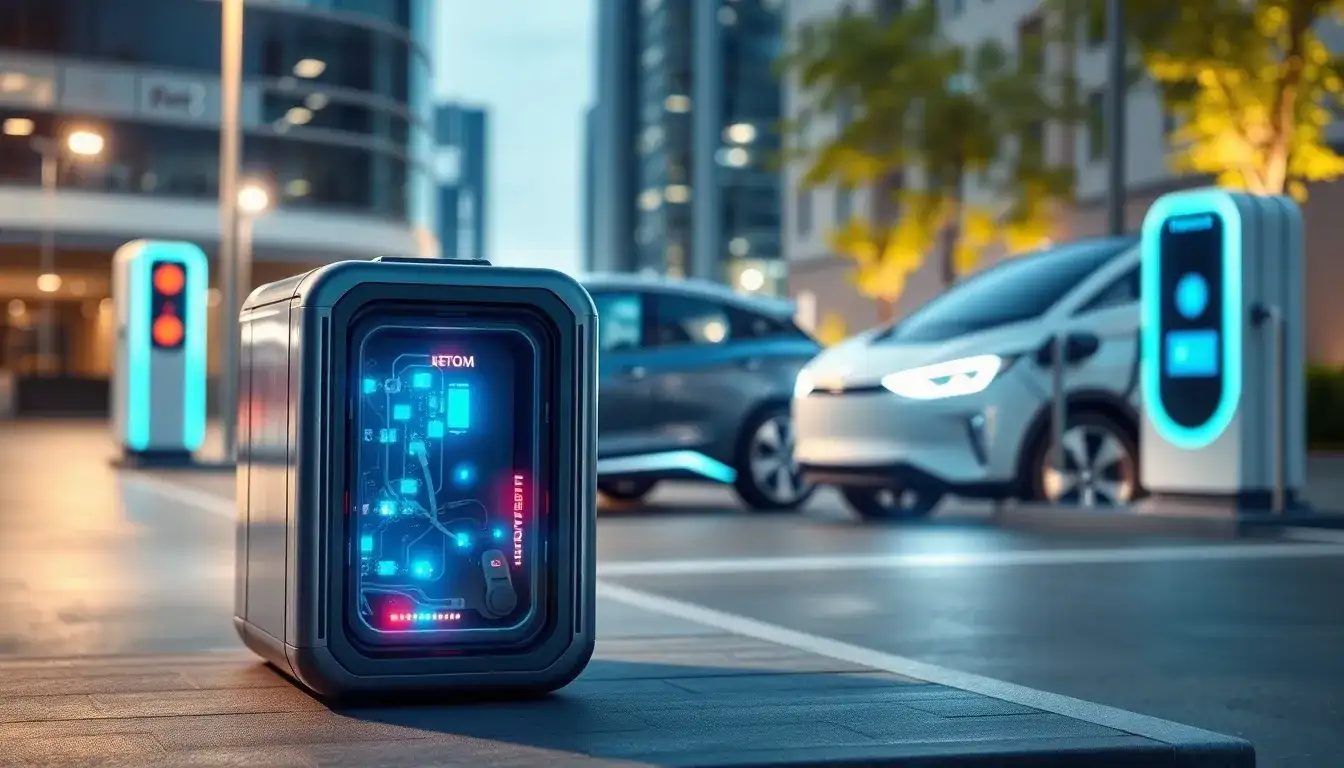Sodium Batteries for Grid-Storage Systems and Electric Vehicles
The future of sodium-ion batteries presents significant potential as a sustainable and cost-effective alternative to traditional lithium-ion batteries. This innovation addresses critical challenges in energy storage, including the scarcity of lithium and sustainability issues.
Abstract
Sodium-ion batteries rely on soda ash, an abundant material derived from trona, a common mineral in the Earth’s crust. This reliance not only lowers material costs but also mitigates ethical concerns and supply chain bottlenecks associated with lithium. The use of soda ash supports environmentally friendly practices that bypass the energy-intensive processes linked to lithium mining. Continuous advancements in sodium battery technology enhance their sustainability and performance.
Recent developments in anode and cathode materials, such as advanced carbon anodes and layered oxide cathodes, have improved energy density, cycle life, and recyclability. Researchers have also made progress in stabilizing electrolytes, increasing efficiency and safety. These advancements bring sodium-ion batteries closer to rivaling lithium-ion systems in terms of energy storage capacity and operational lifespan. While sodium-ion batteries excel in stationary energy storage applications like solar and wind, they still face challenges in energy density, limiting their suitability for weight-sensitive applications such as long-range electric vehicles. Nonetheless, they are poised to play an essential role in a sustainable energy future.
Introduction
The rising demand for efficient and sustainable energy sources has placed rechargeable batteries at the forefront of technological innovation. Lithium-ion batteries currently dominate the market for powering smartphones and electric vehicles. Notably, the transport sector contributes significantly to greenhouse gas emissions, with 44% attributed to passenger vehicles (Sheldon, 2023). Therefore, the adoption of plug-in electric vehicles (PEVs) utilizing lithium-ion batteries presents a strong incentive for automotive companies to transition from gasoline to electric power.
Since their introduction in the 1990s, lithium batteries have transformed energy storage in portable devices (Li, 2018) and have become the industry standard. However, concerns surrounding lithium resource scarcity, sustainability, and rising costs have spurred extensive research into alternative technologies. Sodium batteries have emerged as a viable alternative due to the abundance and low cost of soda ash. Despite facing challenges related to achieving competitive energy densities and long-term stability, this review aims to contribute to the growing body of research focused on efficient, cost-effective, and sustainable energy storage solutions.
Battery Design
Batteries are composed of an anode, cathode, and electrolyte, functioning based on electrochemical reactions. In lithium-ion batteries, the process involves the oxidation of an electrode at the anode while electrons flow toward the cathode, where reduction occurs. Each process takes place in separate halves separated by a barrier, with an electrolyte allowing ion movement. The fundamental operation of sodium batteries mirrors that of lithium-ion batteries, differing primarily in the substitution of sodium ions for lithium ions.
Socio-environmental Consequences of Lithium-Ion Batteries
The lifecycle of lithium-ion batteries presents significant environmental challenges. The extraction of lithium typically involves mining practices that raise ethical concerns, especially as a substantial portion of global lithium is sourced from areas inhabited by indigenous peoples (Murguía, 2024). In 2022, 180,000 tons of lithium were consumed, reflecting a 22% increase from the previous year (U.S. Geological Survey, 2024). This trend, combined with the lack of lithium recycling—reported to be less than 1% (Swain, 2017)—highlights the urgent need for alternatives.
Environmental damage from lithium mining, including water pollution and ecological degradation, is well-documented (Khalil, 2022). Moreover, safety risks associated with lithium-ion batteries, such as thermal runaway and potential explosions, have raised significant concerns about their widespread use (Lan, 2023).
Factors Affecting Battery Life
Both sodium and lithium batteries experience gradual efficiency loss over time due to battery degradation—a phenomenon that occurs with each recharge. The formation of a solid electrolyte interphase (SEI) can help slow degradation, but even with SEI, batteries inevitably deplete after extensive use.
Sodium Battery Design
Sodium batteries operate similarly to their lithium counterparts, utilizing sodium ions in place of lithium. While sodium peroxide exhibits lower energy density than its lithium equivalent, ongoing research aims to improve sodium battery performance, particularly for applications in large-scale energy storage.
Benefits of Sodium-Based Batteries
Sodium’s abundance—1,180 times more concentrated in the Earth’s crust than lithium—makes it a viable alternative for certain applications (Slater, 2012). The price disparity between the two materials further incentivizes research into sodium batteries. In 2023, one metric ton of soda ash cost $140, compared to $37,000 for lithium carbonate (Mineral Commodity Summaries 2023).
Challenges Facing Sodium Batteries
Despite their advantages, sodium batteries face challenges in sustainability and performance. Research continues to focus on optimizing cell design, electrode materials, and interface stabilization to extend battery lifespan (Fang, 2018). Additionally, the effective recycling of sodium batteries remains a significant concern.
Overview of Sodium-Ion Battery Research
Sodium-ion batteries have begun to gain traction in large-scale production, with manufacturers like Faradion receiving orders to meet environmental standards (Faradion, 2020). Existing lithium battery infrastructure can be adapted for sodium battery production, making it feasible to meet increasing demand.
Conclusion
Sodium-ion batteries present a promising sustainable alternative to lithium-ion systems, particularly in addressing global energy storage needs. Their reliance on abundant materials like soda ash could help reduce material costs and geopolitical tensions associated with lithium mining. While sodium batteries may not compete directly with lithium in energy density for small portable devices, they hold potential in large-scale deployments such as grid storage. Continued research and innovation will enable sodium batteries to complement lithium-ion systems, contributing to a cleaner, more sustainable energy future.
Original article by NenPower, If reposted, please credit the source: https://nenpower.com/blog/the-promise-of-sodium-batteries-in-energy-storage-and-electric-vehicles/



